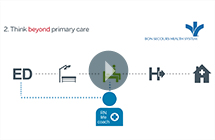Auto logout in seconds.
Continue LogoutWriting in the Wall Street Journal this week, Michael Phillips revealed that the U.S. government authorized Veterans Affairs (VA) physicians to lobotomize at least 1,930 mentally ill veterans during and after World War II.
Has your state improved mental health care since Newtown?
For the investigation, the Journal unearthed memos, letters, and government reports from the National Archives. It found that the VA lobotomized 1,930 veterans between April 1947 and September 1950 at 50 VA hospitals across the country. The lobotomies were performed on former servicemen that the VA had "diagnosed as depressives, psychotics, and schizophrenics, and occasionally […] people identified as homosexuals."
More than a million soldiers suffered psychiatric problems
According to a National Research Council study from 1955, 1.2 million active-duty soldiers were admitted to hospitals during the war for psychiatric and neurological problems. By comparison, 680,000 were admitted for battle injuries.
Treating PTSD in the modern age
Elliot Valenstein, a VA psychiatrist from this period, says, "You couldn't help but have the feeling that the medical community was impotent at that point." Valenstein adds that physicians "were prone to try anything" when presented with a hospital ward full of veterans haunted by flashbacks and nightmares. Moreover, newspapers and magazines often portrayed the procedure as a miracle cure for the mentally ill. Some parents even begged VA physicians to perform them on their troubled sons, Phillips writes.
In a memo from a VA assistant administrator to the agency in 1943, the operation is touted as "of value in eliminating apprehension, anxiety, depression and compulsions and obsessions with a marked emotional content."
When Phillips asked the VA about the procedures, the agency replied that it possessed no records on the surgeries, but acknowledged in a statement that the "procedure became available to severely ill patients who had not improved with other treatments…[but] the procedure disappeared within VA, and across the United States, as safer and more effective treatments were developed."
The lobotomies left many unable to care for themselves, with seizures, amnesia, and loss of motor skills. Moreover, some patients died shortly after the procedure.
Lobotomy survivor speaks
In his interview with Phillips, one lobotomy survivor, 88-year-old Roman Tritz, describes himself as "mentally injured, not mentally ill." The war veteran recounts the day orderlies forced him to have the lobotomy surgery. Two shallow divots on either side of his skull remain as a reminder of that day, in addition to seizures and delusions.
Tritz's health records reveal that he went into war in good health, experienced "the unrelenting stress of aerial combat," and returned home with imaginary voices in his head and nightmares—possibly symptoms of post-traumatic stress disorder (PTSD).
Following the war he spent eight years as a patient in the VA hospital in Tomah, Wis., where he underwent 28 rounds of electroshock therapy, insulin-induced comas, and finally, a lobotomy.
The doctor who recommended Tritz's lobotomy—then 29-year-old psychologist trainee David Merrell—says he is still troubled by his role. "[I]t was a terrible thing that came out of the psychiatric medical field at the time," Merrell tells Phillips, adding that lobotomies "did allow for control of hospital patients—aggressive, combative patients—without having to hurt them." It was the first—and last—lobotomy that he was involved in (Phillips, Journal, 12/12).
Don't miss out on the latest Advisory Board insights
Create your free account to access 1 resource, including the latest research and webinars.
Want access without creating an account?
You have 1 free members-only resource remaining this month.
1 free members-only resources remaining
1 free members-only resources remaining
You've reached your limit of free insights
Become a member to access all of Advisory Board's resources, events, and experts
Never miss out on the latest innovative health care content tailored to you.
Benefits include:
You've reached your limit of free insights
Become a member to access all of Advisory Board's resources, events, and experts
Never miss out on the latest innovative health care content tailored to you.
Benefits include:
This content is available through your Curated Research partnership with Advisory Board. Click on ‘view this resource’ to read the full piece
Email ask@advisory.com to learn more
Click on ‘Become a Member’ to learn about the benefits of a Full-Access partnership with Advisory Board
Never miss out on the latest innovative health care content tailored to you.
Benefits Include:
This is for members only. Learn more.
Click on ‘Become a Member’ to learn about the benefits of a Full-Access partnership with Advisory Board
Never miss out on the latest innovative health care content tailored to you.

